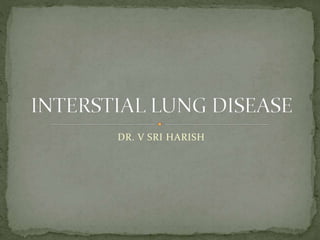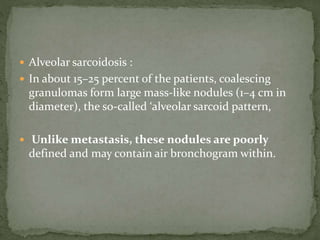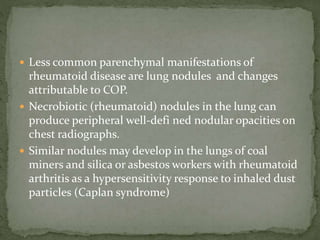The document discusses several diffuse parenchymal lung diseases (DPLDs), including idiopathic pulmonary fibrosis, sarcoidosis, hypersensitivity pneumonitis, pneumoconiosis, and interstitial lung disease associated with connective tissue diseases. DPLDs are classified into groups based on known or unknown causes and clinicopathologic features. High-resolution CT findings are described for several conditions, along with differential diagnoses. Common manifestations across connective tissue diseases include interstitial pneumonitis and pulmonary fibrosis.













































![ This autoimmune disorder of middleaged women is
characterized by the sicca syndrome
keratoconjunctivitis sicca ,xerostomia], and xerorhinia
which results from lymphocytic infiltration.
The most common manifestation is
interstitial fibrosis, which is indistinguishable from
that seen with other collagen vascular disorders.
Involvement of tracheobronchial mucous glands leads
to thickened sputum with mucus pluggingand
recurrent bronchitis, bronchiectasis, atelectasis.](https://image.slidesharecdn.com/ild2-160503173013/85/Interstial-lung-diseases-46-320.jpg)














